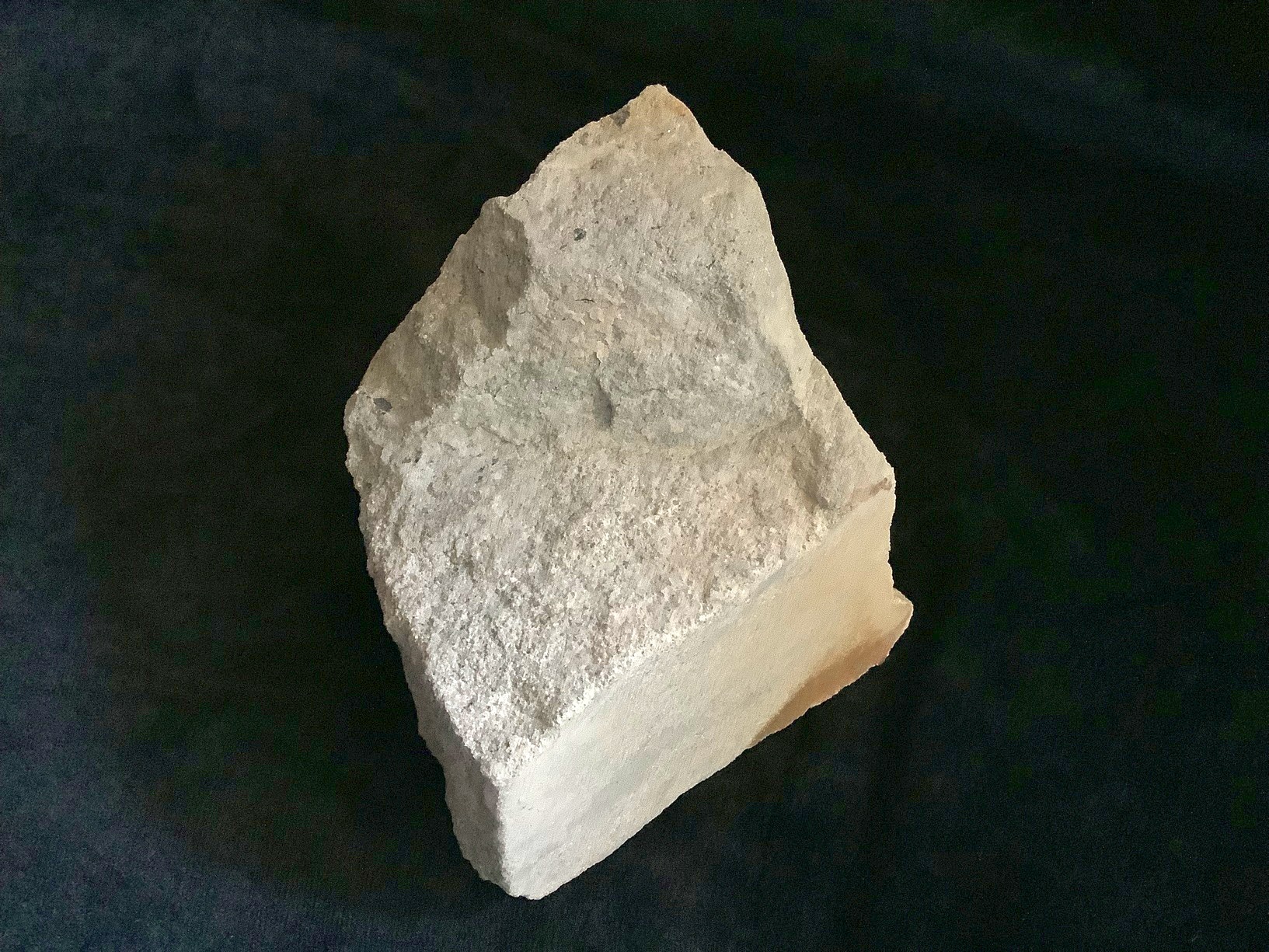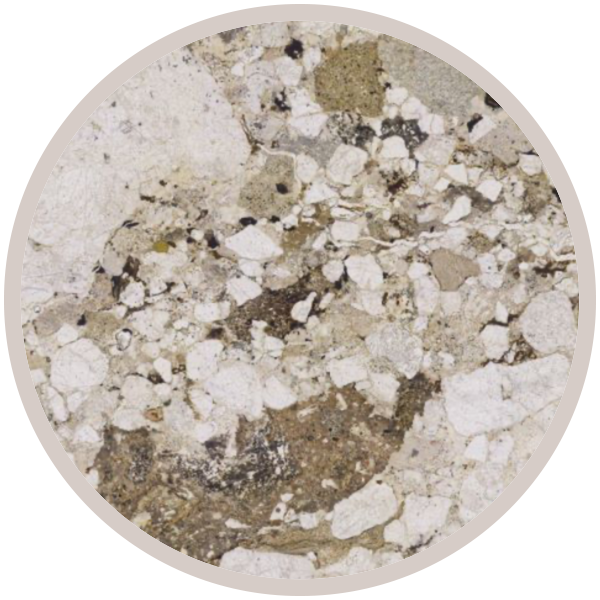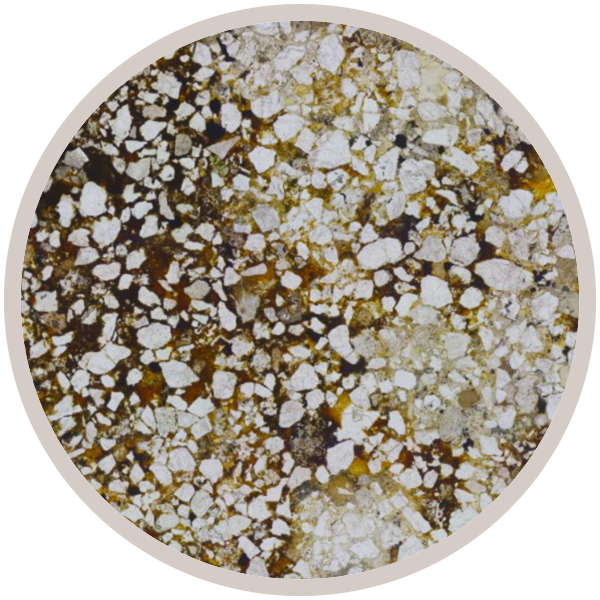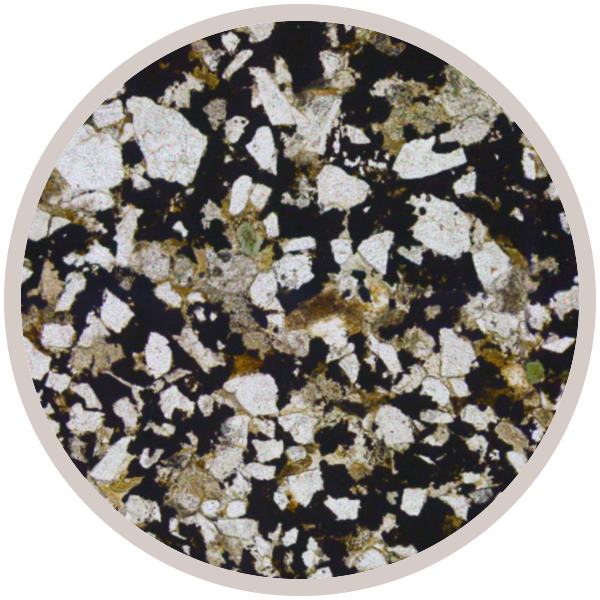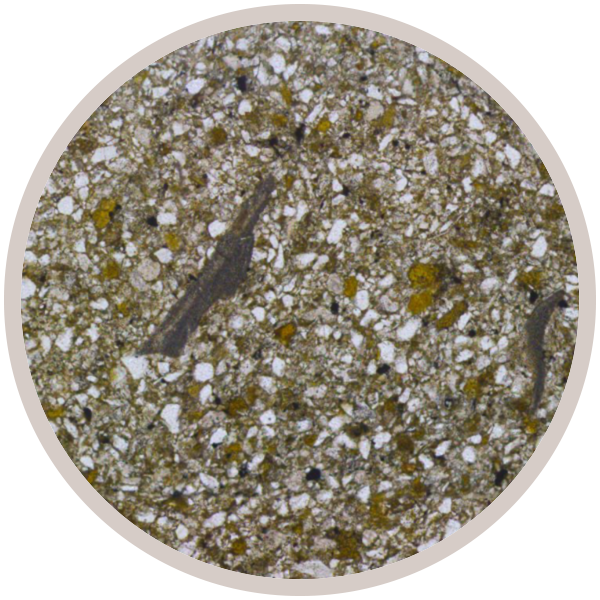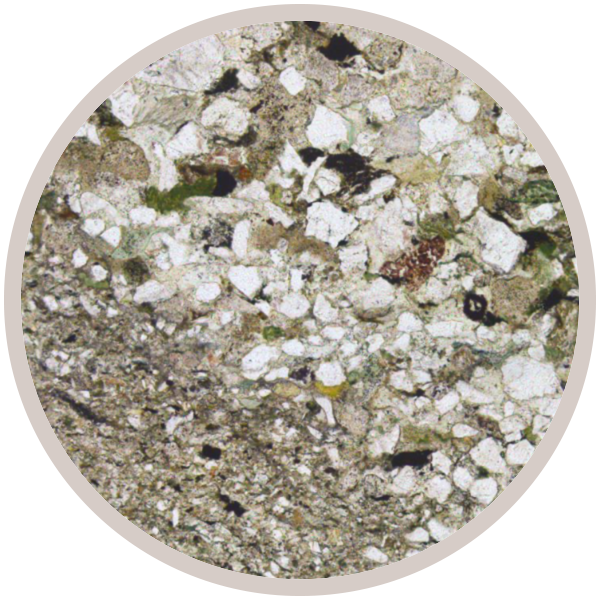
Fact sheet
A micaceous Carboniferous siltstone collected from Doulton's Claypit.
This siltstone was deposited in a low-lying, deltaic environment when the region lay near the equator. These deltas were thickly forested with trees whose fossil remains can be found in some of the strata; this siltstone had black organic fossil debris visible in outcrop on bedding planes.
In thin section, there is considerable, rather irregular variation in grainsize, with lenses of finer material suggesting that sedimentary layering runs roughly parallel to the long axis of the thin section. Grains include clear quartz, dusty feldspar, green chlorite, rarer mica laths, opaque oxides and lithic fragments, many of them appearing of mafic origin. Grains are generally rounded to subangular.
Possible candidates for the organic debris so conspicuous in hand specimen could be a couple of very elongate, irregular opaque grains towards the base of the main fine-grained layer, near the centre of the section. These may correspond to flattened plant debris.
Pale brown interstitial material is likely fine grained clays, while patches of interstitial pale green chlorite are abundant. A carbonate vein cuts obliquely across the lower left corner of the section, identifiable by the high interference colours under crossed polars. The two adjacent brown patches with clear centres to the right of centre in the image are some kind of surface contamination, perhaps spilled oil, not part of the rock.
This sample was collected as part of the 'Macro to Micro' project.
This Collection showcases the geodiversity of a classic geological site: the Saltwells National Nature Reserve in the West Midlands.
As well as displaying thin section and hand specimen views along with information setting them in the context of their landscapes, we also include perspectives and creative responses to the geological heritage of the sites from the local community.
| Explore the stories of the rock layers at Saltwells and Wren's Nest NNRs, designed by students at King Edward VI School, Stourbridge: |
This Collection was made possible by funding awarded to the 'Macro to Micro' project by the Natural Environment Research Council (NERC) under their 'Growing Roots' scheme.
